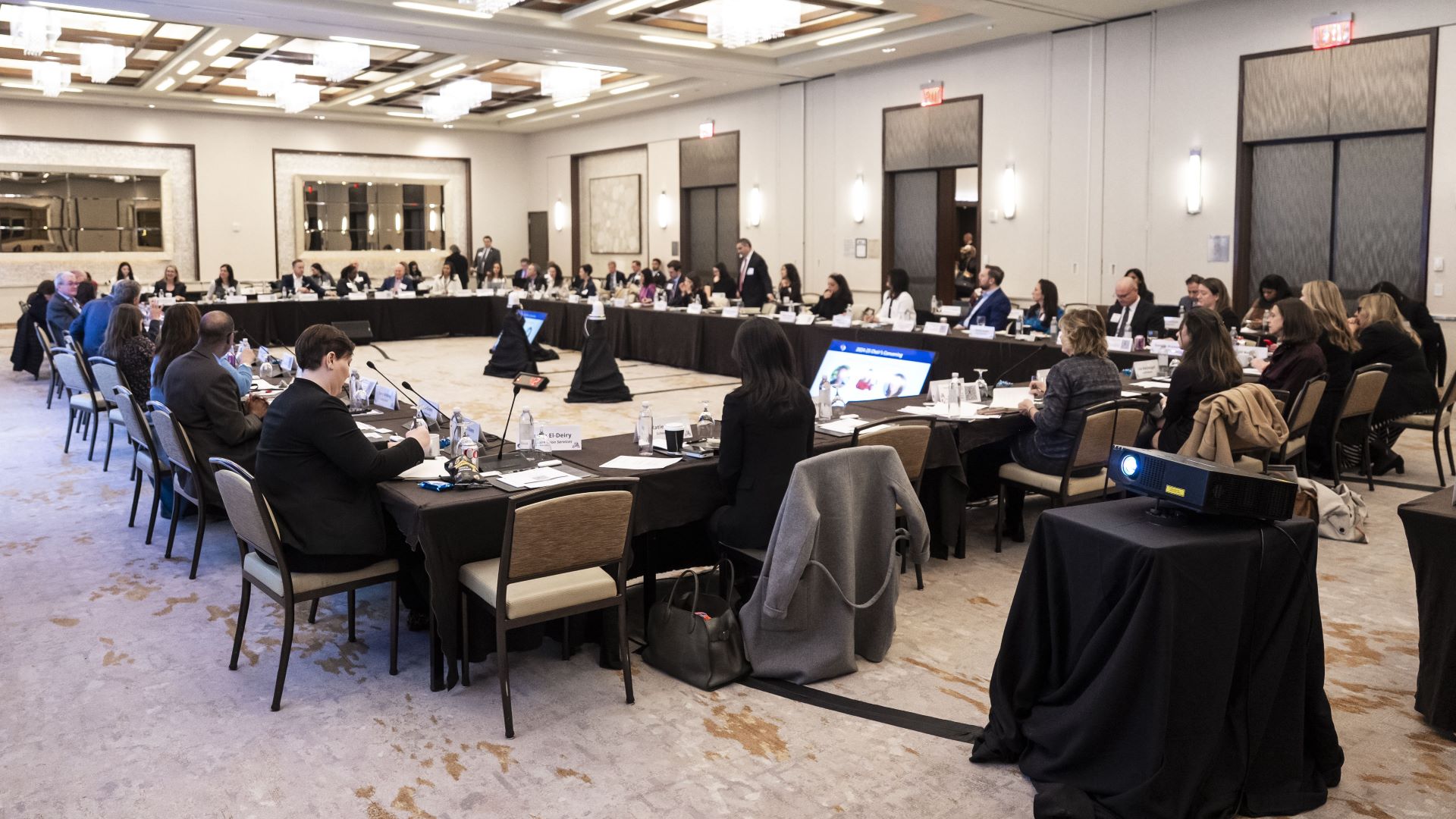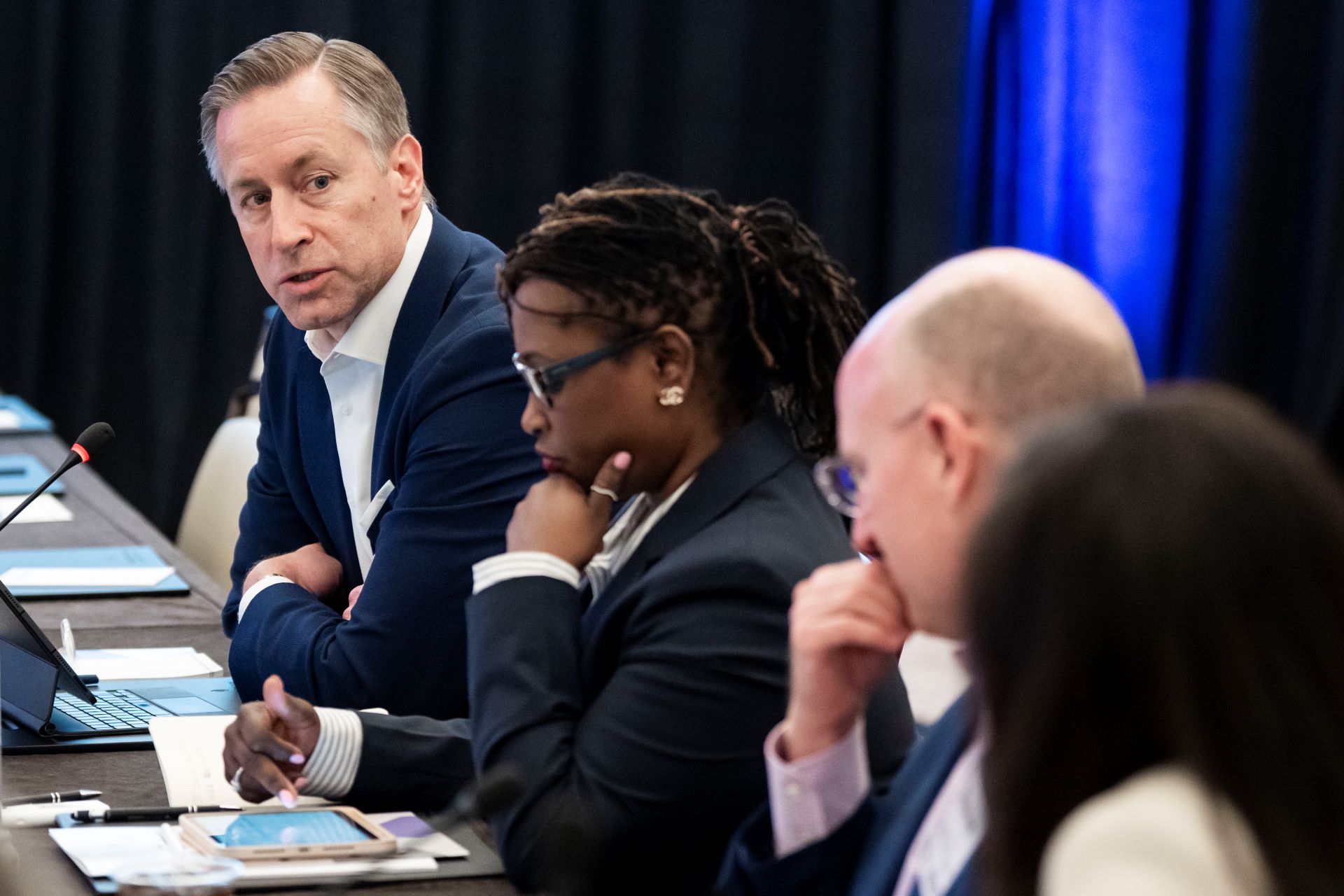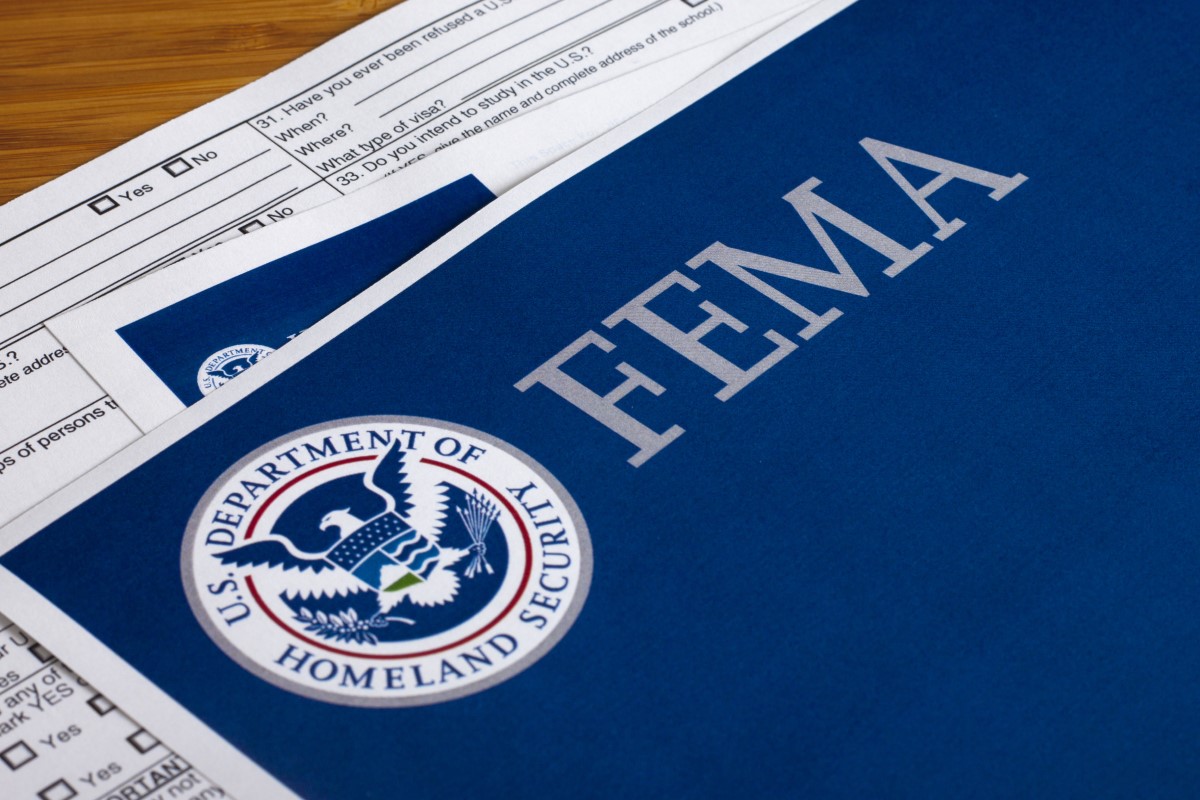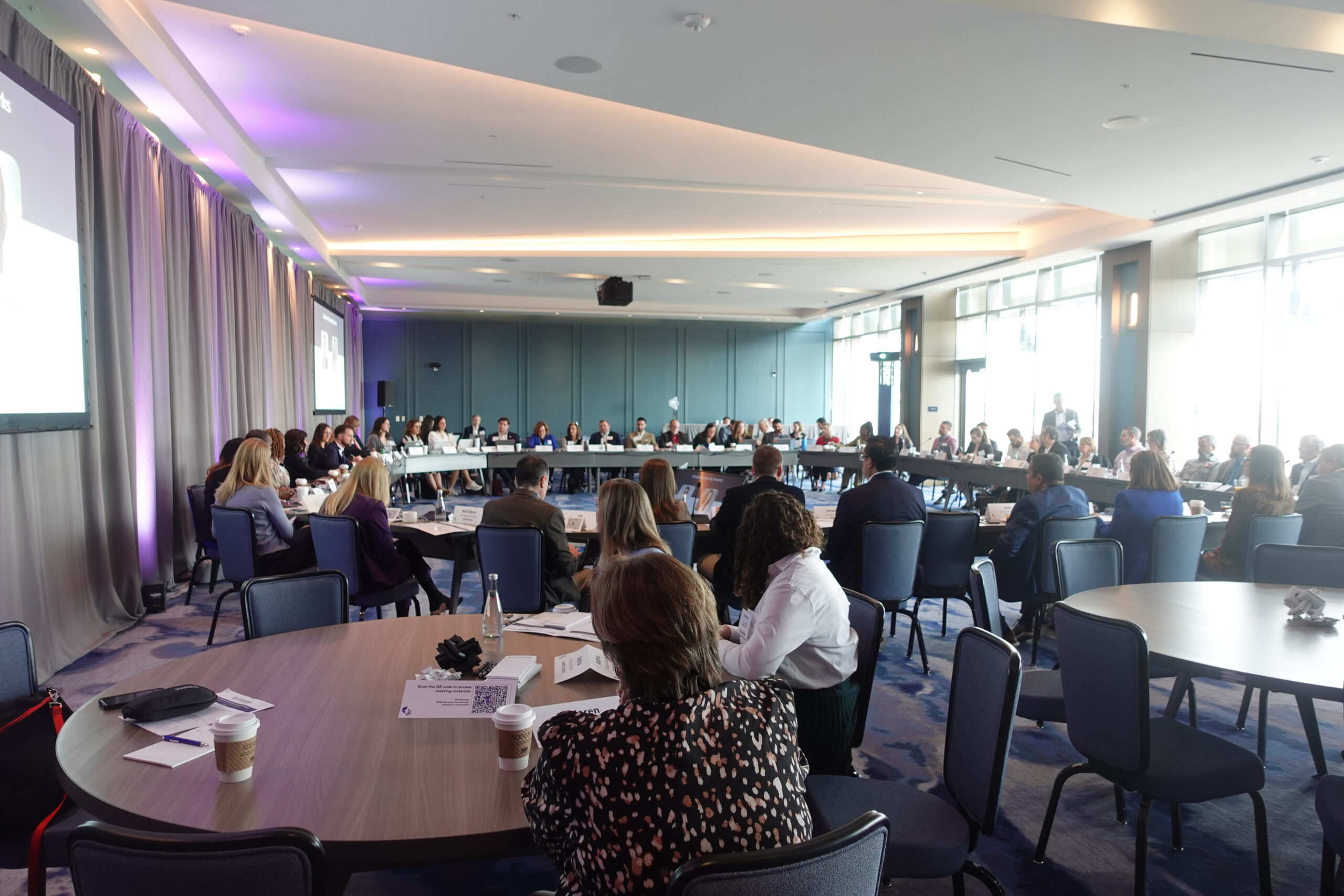During the 2023 NGA Winter Workforce Symposium a discussion was held on how state economic development and workforce development activities can become better aligned to meet the needs of employers and the workforce alike.
Over the last few years, the COVID-19 rebound coupled with a tight labor market has put pressure on economic development and workforce development leaders at every level of government to make smart, strategic investments that help job seekers advance and support business growth. Federal investments in infrastructure, manufacturing and energy sectors passed by the 117th Congress are only increasing the urgency. In response, Governors are improving coordination of economic and workforce development efforts to relieve the effects of these pressures and support economic growth and investment.
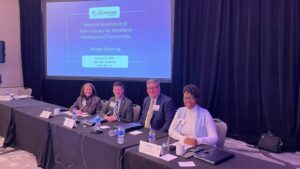
During the 2023 NGA Winter Workforce Symposium, Governors’ workforce policy advisors and members of two NGA affiliate networks, the National Association of State Workforce Board Chairs and the National Association of State Liaisons for Workforce Development Partnerships discussed how state economic development and workforce development activities can become better aligned to meet the needs of employers and the workforce alike.
Wesley Feist, Director of Montana’s State Workforce Innovation Board (SWIB), Kurt Foreman, President & CEO of Delaware Prosperity Partnership and Ashely Teasdel, Deputy Secretary of the South Carolina Department of Commerce joined Dr. Sally Rood, Senior Policy Analyst in the Workforce Development & Economic Policy program at NGA, to share their experiences integrating their states’ workforce and economic development efforts.
Identifying State Workforce & Economic Development Structures
In a majority of states, economic development and workforce development are not inherently integrated. This results in a wide variety of state-level governance structures for administering and coordinating workforce and economic development activities. For example, Delaware, Montana and South Carolina each have different structures implementing the economic and workforce development programs in the state.
- Delaware Prosperity Partnership (DPP) is a 501c3 nonprofit created by Governor John Carney to privatize a portion of the state’s economic development effort. DPP functions as the state’s lead economic development entity and is tasked with executing many of the responsibilities that other states’ Departments of Commerce perform. The Delaware Department of Labor, a cabinet-level agency, provides the state’s workforce development and houses the Delaware Workforce Development Board.
- Montana has a traditional state structure where the Department of Commerce and Department of Labor & Industry are both cabinet-level agencies, with the Department of Labor & Industry housing the Montana State Workforce Innovation Board.
- South Carolina has a Department of Commerce and Department of Employment & Workforce, two of the agencies under the leadership of Governor Henry McMaster, which execute the state’s economic and workforce development programs respectively.
Understanding State Level Change and Transformation
State economic and workforce development organizations are experiencing a great deal of change due to a confluence of factors. In South Carolina, the state legislature is addressing workforce challenges by proposing the creation of a new workforce development office, housed in the Department of Employment & Workforce, which will have a more centralized team to align workforce and economic development.
In Montana, the role of Governor Greg Gianforte’s chief economic development officer is shifting to coordinate the efforts of both the economic and workforce development departments. “Montana is working to not only say we are collaborating but also removing barriers that have prohibited collaboration in the past,” says Wesley Feist.
In Delaware, DPP is intentionally structured to work across organizations – whether a local-level economic developer or the state’s Workforce Board. A recent round of strategic planning is contributing to further aligning the mutual efforts of DPP and the Delaware Workforce Development Board.
“I love that Partnership is in our name,” says Kurt Foreman. “It makes it clear how we engage and tackle important opportunities in our State.”
Seeing How Federal Investments Result in State Shifts
Recent federal funding is driving much of the economic development in states, such as for the manufacturing of chips and renewables through the Chips and Science Act (CHIPS) and Inflation Reduction Act (IRA), and transportation and infrastructure improvements through the Infrastructure Investment & Jobs Act (IIJA).
Economic development organizations are receiving inquiries from both domestic and international companies looking for new production opportunities and locations. High-dollar projects require a large amount of space for sites which can disadvantage small states grappling with site enhancement strategies. At the same time, such facility investments may ultimately require thousands of workers. As a result, economic development practitioners are increasingly considering the availability and development of sites as well as a skilled workforce.
To support this, states have used American Rescue Plan Act (ARPA) funding to stand up training programs and short-term credentialing, including curriculum design and delivery. Accelerate Montana, for example, allows employers to determine the type of credential necessary for an employee to succeed and then develops and executes the curriculum alongside the employer.
Enhancing Alignment for Business Recruitment
More companies are developing their own training as shifts toward Industry 4.0 are leading to emerging technology sectors with needs for a highly skilled workforce. This means it is critical for states to build their workforce pipelines in alignment with emerging industries and employers. It also necessitates having workforce representation at the table for negotiating incentive agreements so they can address the latest workforce retooling and reskilling.
Having both recruitment and workforce actors represented also makes it easier to offer dollars to a business prospect from a state strategic fund that addresses the right combination of skills development, site development, and broader infrastructure. For example, South Carolina has flexibility through its Closing Fund program, which historically has been successful in structuring grants toward infrastructure, to now add training incentives to its performance-based business agreements.
Aligning for Additional Purposes
Beyond business recruiting, another impetus for better alignment is community planning. Montana is currently building a data-sharing platform among the Department of Labor & Industry and Commerce Department to include information on workforce, economic development, demographics, land and more. If a business is interested in moving to the state, it can make decisions based on holistic regional information available at the new platform, rather than having to connect with multiple departments.
Furthermore, coordinating economic and workforce development can build more resilient economies. Collaborative outreach to underserved communities will contribute to an increasingly diversified workforce and state economy over time. “South Carolina has learned that the 3 C’s — collaboration, communication and cooperation — are key to developing creative approaches for solutions centered around business development, community engagement and workforce development,” says Ashely Teasdel. Montana is targeting workforce training for disadvantaged populations such as disabled individuals, justice-involved individuals, and Native American populations as employers are increasingly viewing these upskilled individuals as potential pools of untapped talent to fulfill their workforce needs.
Capitalizing on the Benefits
Despite challenges, there are many benefits of aligning economic and workforce development that the panelists discussed. To be able to lead successful regional initiatives, states need baseline data to address the concerns of incoming or expanding employers. As labor and industry data becomes more aligned, states can address employer concerns along a continuum of services or programs, rather than in a piecemeal manner.
In addition, based on closer collaboration with state business recruiters, state workforce programs can make more strategic use of their funding streams to serve the individuals receiving training and education. Such outcomes can go well beyond transforming individual lives in communities by changing the economic standing of the communities themselves.
This article was developed by Sally Rood, Senior Policy Analyst, NGA Center for Best Practices and Jordan Morang, Policy Analyst, NGA Center for Best Practices. The biannual NGA Workforce Symposium is hosted by NGA’s Workforce Development & Economic Policy program as part of its Workforce Development Technical Assistance Program. These meetings convene two affiliate networks of the NGA Center for Best Practices: the National Association of State Workforce Board Chairs and the National Association of State Liaisons for Workforce Development Partnerships. The next Symposium will be hosted in Fargo, North Dakota, in August 2023. For more information about the Workforce Development Technical Assistance Program or the affiliate networks, please contact our Workforce Development and Economic Policy team at: workforcedevelopment@nga.org.



